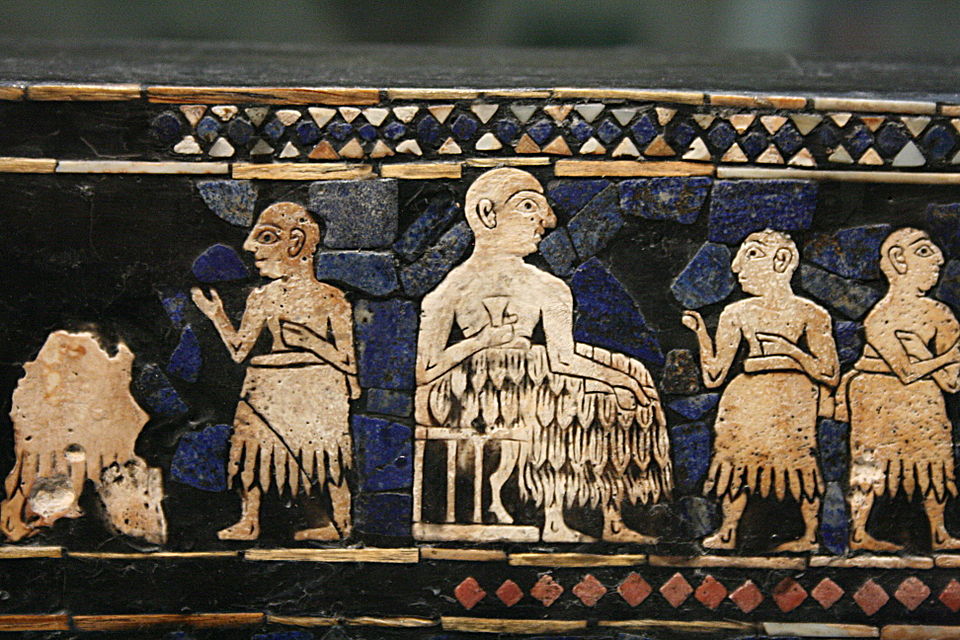Free Market Ideology Compared to the Principles of Near Eastern Rulership
The ability to prevent rentier oligarchies from emerging turns out to be the key distinction between “kingship” (or modern socialism) and “free market” economies.
Introduction
The most critical economic issue confronting any society is how it treats debt dynamics, land tenure and tax policy. Will governments protect the economy’s overall viability by subordinating financial and property interests to the common weal, or will these interests break free from regulation and taxes to impose creditor and other rentier claims at society’s expense?
The Public Interest Rests on Government Regulation
Only a strong government can regulate economies in the public interest. The ability to prevent rentier oligarchies from emerging turns out to be the key distinction between “kingship” (or modern socialism) and “free market” economies. What is euphemized as the “individualism” inherited from classical antiquity and applauded in modern times as expressed in political democracy has meant in practice allowing the public domain, land and basic infrastructure to pass into the hands of a creditor class, and failure to bring financial dynamics under control to protect the population and even governments themselves from deepening indebtedness.
From Kingship to Oligarchy
As Aristotle noted, democracies evolve into oligarchies as the wealthiest families gain control of government and write new laws to consolidate their power. If the West’s genesis is viewed as starting with classical Greece and Rome, it must be acknowledged that antiquity’s great transition lay in replacing kingship not with democracy but with oligarchy enacting a pro-creditor legal philosophy permitting creditors to draw wealth into their own hands. What was lost was the economic balance and long-term economic viability that Near Eastern rulers were able to maintain by proclaiming Clean Slates.
Mutual Aid vs. Individualism
The ethic of mutual aid that typically has led low-surplus economies to deter letting personal gains be obtained selfishly at the expense of society at large found an echo in antiquity’s Stoic and ultimately Christian disparagement of gain-seeking, wealth addiction and money-lust (“love of silver”), leading the Church to declare the charging of interest to be sinful. But today’s “greed is good” individualism (“private vices, public benefits,” as Bernard Mandeville’s 1714 Fable of the Bees put it) is held to be the driver of material progress. Western “free markets” are following a fiscal and financial dynamic similar to that which led to the decline and fall of Rome, leaving creditors “free” to indebt economies and monopolize their wealth. This freedom for rentiers is juxtaposed to autocracy, defined to mean strong government forward planning with an ability to check creditors and the overgrowth of debt and financial wealth. Frederick Hayek’s idea of freedom was to accuse any public regulation and government planning of leading society down the road to serfdom, not as saving economies from it.
The Modern Defense of a Growing Debt Burden
Today’s legal principles follow those of Rome in upholding the sanctity of an exponentially increasing debt burden. This policy is rationalized by the rhetoric of individualism and “free markets,” a euphemism for letting financial wealth remove money, land and labor from their public context, without concern for how this polarizes the distribution of income and wealth. Today’s mainstream ideology defines liberty and free markets to mean freedom from public regulatory authority, leaving the economy “free” for the power of rentier wealth to shape markets and politics to serve creditor and other rentier interests without government regulatory constraint.
The rationale for weak government regulation of finance and debt is the fantasy that economic downturns—typically resulting from rising indebtedness and interest rates—are self-curing by automatic stabilizers. Since the mid-20th century this “free market” ideology has held that credit markets left to themselves will work automatically to maintain social balance and viability, and that economies can adjust to any volume of debt with a presumably fair distribution of income and wealth. If that assumption were correct there would be no need for governments to intervene to save economies from being increasingly indebted and rent-burdened.
Austerity Creates Polarized Economies and Powerful Creditors
The problem is that the market’s “adjustment” is achieved by transferring more and more income and property from debtors to creditors as the expanding volume of debt mounts up more rapidly than the ability of debtors to pay. Yet economists typically project national income as growing at an exponential trend rate, without recognizing that the debt overhead tends to expand faster, so that an increasing proportion of personal and business income must be paid as debt service instead of being available for spending on goods and services.[1] The resulting debt deflation leads to austerity as the economy polarizes and the power of the creditor oligarchy increases.
References
- ↑ Thomas Piketty’s Capital in the Twenty-First Century is a welcome exception, explaining today’s widening economic inequality by his formula r > g: the rate of return to capital [r] exceeds that of economic growth [g]



